Analysis on the advantages and problems of studio LED lamps
Abstract: The development of LED luminaire technology has greatly reduced the power consumption of studios and has a long service life. However, due to the maturity of manufacturing technology and the different levels of production, there are still some problems in the actual use of LED lamps in the studio. It is very necessary and necessary to find problems, analyze the causes, and constantly improve the practical application of LED lamps in the studio.
[Keywords] LED lighting studio application problem
Introduction
It is a general trend for TV studios to choose lamps that use LEDs as a light source. The advantages of LED light source luminaires compared to conventional light sources are obvious, but such problems have also been encountered in actual use. The author will proceed from practice to analyze the advantages and shortcomings of LED lamps. How can we better use them to avoid disadvantages and provide us with satisfactory light effects?
First, the advantages of LED lamps
LED light effect, long life, can achieve colorful changes (including color temperature), and can also achieve their own dimming, so LED lamps are particularly suitable for film and television lighting. With the development of technology, LED lighting fixtures have also been widely used in television studios. CCTV headquarters new studios use a large number of lamps with LEDs as the light source. As shown in Figure 1.

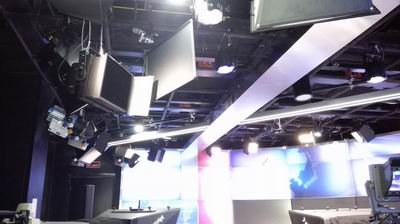
Figure 1 CCTV headquarters studio LED lamps
Compared with traditional tungsten lamps, LED lamps are energy-saving and environmentally friendly. In the past, the illumination of 1000-watt tungsten spotlights can now be achieved with 100-watt LED spotlights, which can save more than 80% energy compared with traditional light sources under the same lighting effect. It effectively reduces the ambient temperature of the studio and makes the studio staff feel more comfortable, especially the host, without the feeling of roasting.
The tungsten filament lamp generates a large amount of heat energy during energy conversion, so that the filament is heated and deformed and softened, and the filament is easily broken due to vibration. LEDs do not have filament breakage due to different illumination principles. Figure 2 is a comparison of the LED light source and the tungsten light source.
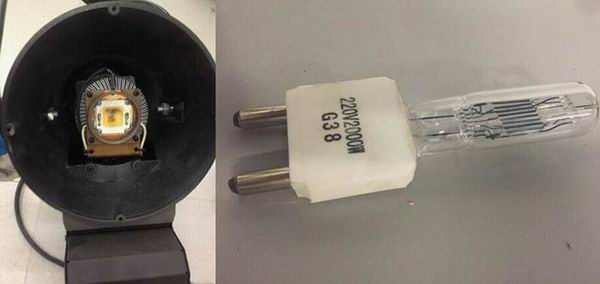
Figure 2 LED light source and tungsten light source
The small size of the LED luminaires makes it more flexible in the space utilization of the studio. When the temporary space is changed into a studio, the space requirements are lower. On the other hand, it is light and portable. Coupled with the variety of lamps, round, square, and even shaped, we make the use of lamps more flexible.
The luminous efficiency is higher than that of the conventional tungsten lamp, because the LED generates much less heat than the conventional tungsten lamp when the electric energy is converted into light energy, so its efficiency is very high.
The color temperature adjustment of LED lamps is convenient. The color temperature of the lamps can be easily adjusted by certain technical means. The adjustable color temperature range is generally 3000K~6000K, which fully meets the shooting requirements of the camera, and the color temperature is stable and the attenuation speed is extremely slow. In contrast, conventional tungsten lamps typically require a stencil to be added to the path through which the light passes to change the color temperature. Because the tungsten lamp emits a relatively large amount of heat, the colored paper is easily aged under high temperature baking, causing a change in color temperature. It is necessary to frequently replace the new color temperature paper, and the paper change is inevitable, and the light work is large. The LED lamps are still very convenient compared to the two.
Second, the studio commonly used LED lamps
According to the needs of studio shooting, the commonly used types of LED lamps are soft light, spotlight and effect light. The following is an example of a luminaire used in the new studio of CCTV headquarters. As can be seen from the types of LED luminaires, LED luminaires can also be made with different light qualities through changes in the optical system to meet different lighting requirements. In the characterization of key figures, Fresnel spotlights and imaging lights can be used, which can meet the standard requirements in recording and make the characters more three-dimensional. The soft light can be used as an auxiliary light tile because of its uniform light quality, which can make the characters more full. The use of effect lighting provides us with a lot of creative space. The diversity of LED luminaires gives us more choices.
1, soft light
The optical system of the soft light is relatively simple, and is generally used to directly and reflect the light emitted by the light source. The projection area of ​​the soft light is generally large and uniform, and is suitable for use as a large-area auxiliary cloth. Figure 3 shows several soft light fixtures we use.
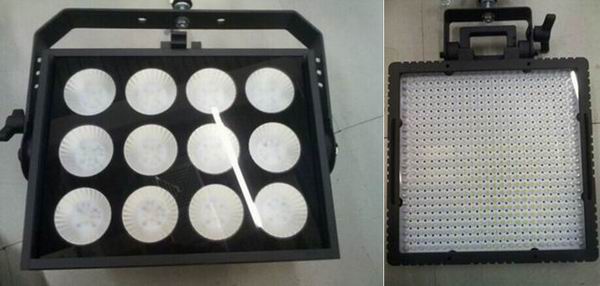
Figure 3 soft light
2, spotlight
The spotlights used in the studio are typically Fresnel spotlights and imaging spotlights.
Figure 4 shows the ARRI L7 spotlight, which allows easy adjustment of the proportion of each color in the spectrum. It is very good as a main light source for people.

Figure 4 ARRI L7 spotlight
Figure 5 shows the Brilliance 300W LED-controlled spotlight and the Starlight 300W LED spotlight, which are mainly used in the variety studio as the main surface light.
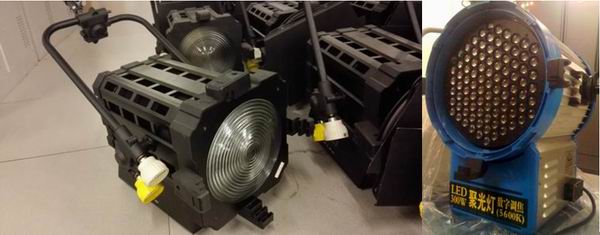
Figure 5 Spotlight
Figure 6 shows the ETC LED imaging light. The light source of this lamp is excellent. It uses a 7-color LED lamp bead combination light source, which is different from ordinary LED light source, and the dimming is more convenient and flexible. The slicing function controls the light zone very well. Mainly used as the main light of the character.
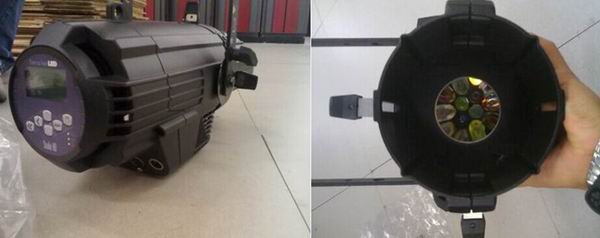
Figure 6 ETC LED imaging light
3, LED effect light
Among the luminaires used in the studio, a variety of effect lights are used in addition to soft lights and spotlights. It is mainly used for large-area dyeing and lighting composition of the stage. Figure 7 shows several effect lights used in our studio, with PAR lights, dye lights, and matrix lights.

Figure 7 various effect lights
Third, the analysis of problems in the application of lamps
1, calender strobe problem
In practical applications, it is found that some LED lights cause stroboscopic TV pictures when used in the case of calendering, and stroboscopic ripple phenomenon occurs, which we call calender strobe. Different brands of products have different dimming values ​​for calendering stroboscopic. When the lamp is full power output, the stroboscopic ripple phenomenon will be reduced or even disappeared. As a lighting worker, the TV picture is like a canvas. It is impossible for all the pigments to appear with high saturation. The picture needs to be meticulously sculpted. From the aspects of composition, color, light ratio, etc., sometimes only one A little bit of color is enough to make a reconciliation. Now that you have a rich color, you can't control its light and dark changes very well. It's really tricky. Moreover, it is impossible to use only one manufacturer's lamp type in a large-scale variety show. The number of lamps increases, and the probability of stroboscopic increase is greatly increased.
To analyze the phenomenon of stroboscopic light, it is necessary to start from the LED lighting control assembly, which is composed of many electronic components, including switching power supply, driving circuit and control circuit. The drive circuit converts the low-voltage DC power into a variable, constant-current power supply according to control requirements. The frequency of the pulse width modulation of the driving circuit is related to the flicker frequency of the LED output light. This low frequency produces rolling streaks in the TV screen. The frequency is increased, the pulse width is narrowed, the dimming level is reduced, and the dimming smoothness is reduced. This is a contradiction.
At present, our solution is to firstly use the model of the luminaire as much as possible under the condition of the condition. After the model is unified, it can be docked with the camera technology to avoid the stroboscopic frequency of the luminaire pulse frequency and the camera frequency. appear. When the luminaires are not uniform, find the interval between the maximum and minimum stroboscopic bands of the lamps used, avoiding this stroboscopic range, and the operation difficulty and limitations are greater.
Therefore, it is hoped that the production enterprise will start from the technical analysis and solve the problem of calendering and stroboscopic on the lamp control circuit.
2, heat problem
Temperature has a direct and significant effect on the luminous efficiency of the LED. The higher the temperature, the lower the luminous efficiency. To improve the luminous efficiency of LED lamps, it is necessary to control the operating temperature of the LED light source. Heat dissipation must be considered. Currently used cooling systems are divided into two types: fan and fanless.
Fanless heat dissipation generally uses a heat sink substrate and a heat pipe to dissipate heat. Figure 8 shows a fanless heat sink. It transfers heat efficiently from the substrate to the heat sink fins. Lamps using this type of heat dissipation are very quiet and do not generate noise, but therefore the amount of heat sinking substrate is required to increase the contact area with air, so that the volume of the lamp will increase and the weight will increase. In a limited studio space, the large body of the lamp brings a lot of inconvenience to the user.
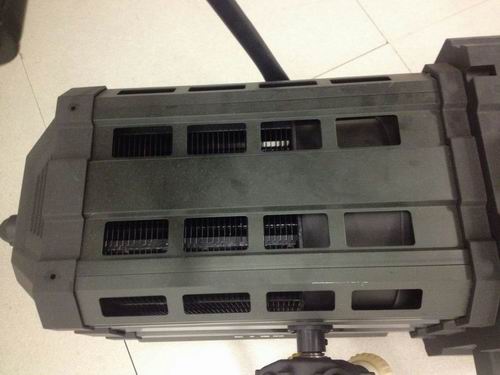
Figure 8 fanless heat sink
CCTV headquarters C area financial channel studio is 80m2, using slide rail hoisting system, the host station location is divided into three areas, each area needs lamps to complete the lighting work, then the large amount of lamps will show the drawbacks The distance between the lamp and the lamp is very close, and the space for lateral swing is not enough, which causes certain inconvenience to the dimming. Sometimes, because the projection direction of the luminaire is different, one lamp position needs to be reused by multiple lamps, and the lamp body interferes with each other. We adopt the form of a longitudinal telescopic rod, which can conveniently control the vertical position of the vertical direction and extend the luminaire downward to ensure the light exit angle. Avoid the upper luminaire and solve the problem of "one multi-lamp".
Fan cooling is a common way to actively dissipate heat. It accelerates the heat dissipation process through a fan (shown in Figure 9). However, the rotation of the fan produces a certain amount of noise. In a quiet small studio, the sound of the fan is particularly obvious, which seriously affects the normal pickup of the microphone.
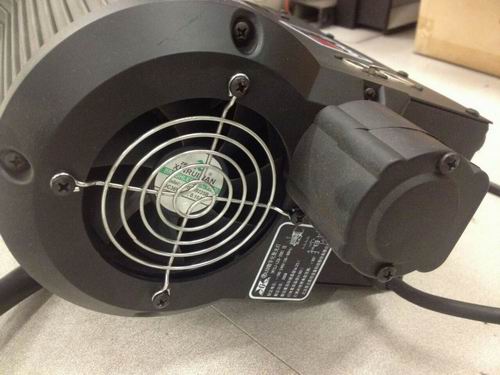
Figure 9 fan cooling
The CCTV headquarters E05 is a 400m2 studio. The recorded programs include "Ethical Watch", "Certificate of the Court", "Legal Lecture Hall", "Pufa Column Drama" and "Psychological Interview". The face light, side light, and backlight of the characters in the studio are all fan-cooled LED threaded spotlights. At the beginning of use, the luminaire was almost noise-free and quiet. After one year of use, fan noise began to appear, which has affected the pickup of the microphone. There is a sizzling fan sound in the recorded sound, and the sound engineer can only use technical means to reduce the impact of the fan noise. In addition, because the fan drives the air to flow, the dust in the environment will adhere to the blades of the fan. Over time, a large amount of dust will accumulate on the fan, and even some impurities will kill the fan and lose the heat dissipation function of the lamp. In the live broadcast, the lamps can't dissipate well. If the temperature is too high, flashing or extinguishing will cause irreparable damage, and the consequences are very serious.
In response to these problems, we maintain the lamps every three months, use high-pressure air guns to clean up the accumulated dust, ensure that the heat dissipation function works normally, and replace the fan with serious problems, but this can only reduce the noise of some fans. . At present, attempts are being made to reduce the sensitivity of the radio equipment and filter noise to reduce the impact of noise on the recording quality.
Therefore, it is hoped that manufacturers will adopt high-quality, low-noise fans to meet the technical requirements of studio video for noise.
3, distance and illumination problems
At present, the power of LED lamps used in our studio is generally below 300W. For small and medium-sized studios, when the projection distance is short, the illumination requirements can be met. For example, CCTV headquarters E02, E03 and other 800m2 studios, 300W LED spotlight illumination is also no problem. However, for the large studios with the increase of the distance of the light projection, the 300W LED spotlight can not meet the requirements, only the traditional 2000W tungsten halogen lamp or high-power computer moving head light can be selected. Therefore, it is our demand to have a high-efficiency, low-power LED spotlight to completely replace the 2000W tungsten halogen lamp.
4, signal control system fault point problem
The traditional light source luminaire is controlled by the light console to control the thyristor through the signal, and the LED luminaire is dimmed by itself. It requires direct power to the cabinet and controls the light and darkness of the fixture through the console output signal. The main signal of the lighting console goes to the signal distribution amplifier, then to the signal node, and finally to each luminaire. LED luminaires have a more complex signal control system than traditional light source luminaires, which invisibly increases the difficulty of troubleshooting points and maintenance troubleshooting.
In order to adapt to this complicated control system, each power supply circuit is numbered in the one-to-one correspondence when the lamps are installed. Mark which distributors the signals come from, which fixtures are connected in series on each node. In this way, when a problem occurs, the fault point can be quickly detected to determine whether the lamp is not powered. If the lamp has electricity, it can quickly determine whether the signal control is a problem.
Our usual practice steps are:
a) not controlled, check the main signal;
b) a group of luminaires is not controlled, check the corresponding signal nodes;
c) A lamp is not controlled, check the lamp's own signal receiving unit.
5, the problem of light source consistency
When the lamps of different brands are put together and the white light is used together, it will be found that the color temperatures of the different brands of lamps projecting white light are inconsistent, resulting in the phenomenon of reddish and bluish when the lamps are mixed.
Therefore, in the case of mixed lamps, set an intermediate value, measure the deviation value with a light meter, and then add a color filter on the lamp to filter out the excess color light to achieve a unified purpose.
Of course, it is best to use the same manufacturer, the same batch, and the same type of lamp in a studio to achieve uniform color temperature.
6, maintenance and operating costs
LED luminaires are very sophisticated and are much more complicated than traditional luminaires. At the same time, in exchange for higher failure rates and maintenance costs. Compared with traditional lamps, the price of lossy parts is several times or even ten times higher than that of traditional lamps.
Fortunately, the maintenance rate of good LED lamps is very low, the lamps are relatively durable, and the life of LED light sources is much longer than that of traditional light sources. It is calculated to reduce operating costs and maintenance rates, and the power consumption is also greatly reduced. It has the effect of saving money. We will also carefully maintain and minimize the damage caused by human factors. Still hope that with the development of technology, the quality of LED lamps has been greatly improved, economical and durable, and inexpensive, which is what we need.
Conclusion
LED light source is a new type of illumination source that is booming. Under the general trend of energy saving and emission reduction, the application of LED technology can solve the energy saving problem well and meet the work requirements. Its advantages are all we can see. Although it still has some problems, but with the development of technology, I believe it will be solved. After all, the performance advantages of LED are very obvious. We will continue to try and explore in our daily work, maximize its advantages, solve existing problems, and benefit from harm, so that LED lamps can better serve us and reflect its own value.
references:
[1] Wang Jingchi: "TV Lighting Technology and Application" China Radio and Television Publishing House, June 2010
[2] Journal materials: 2013 Beijing International LED Film and Television Lighting Technology Summit Forum, August 2013
[3]
[4] http://
About the Author:
Xie Zejun graduated from the Beijing Opera Art Vocational College in June 2011. In 2012, he entered the Chinese Opera Academy and graduated in 2014. Professional in lighting, bachelor degree. After graduation, he entered Zhongshi Kehua Company and worked on lighting technology at CCTV headquarters. The main participating programs include "Thank you for your kindness", "Mr. Bole's slightly funny show", "Very 6+1", "Art Life", "Healthy Road", "Wall Comes" and so on. Drama: Beijing folk song music custom scroll "Buffalo", "North China Five Provinces Dance Competition", "Alashan - Tao Lai", "People's Jiao Yulu" and so on.
Aluminum Speaker,Aluminum Speaker Stands,Aluminum Speaker Cone,Aluminum Speaker Grill
KAM KIU ALUMINIUM GROUP , https://www.kamkiualuminium.com
